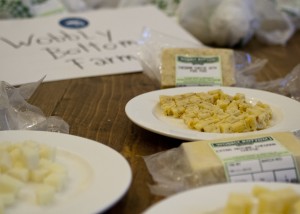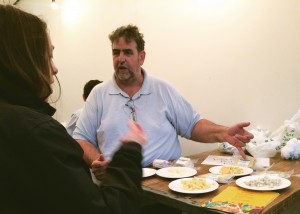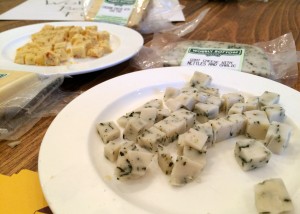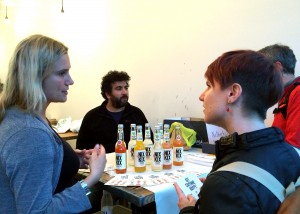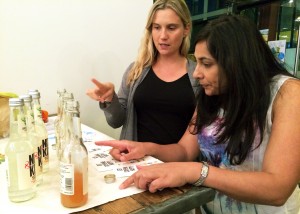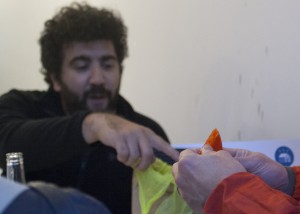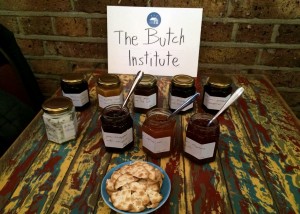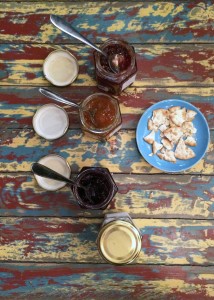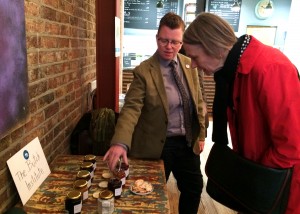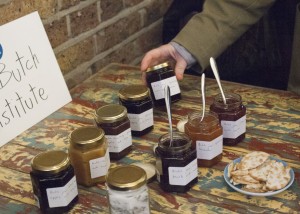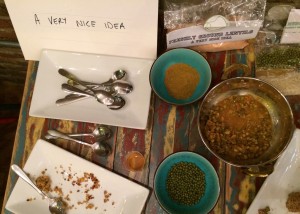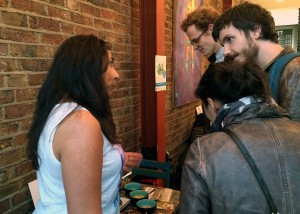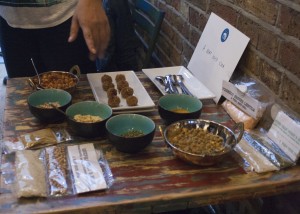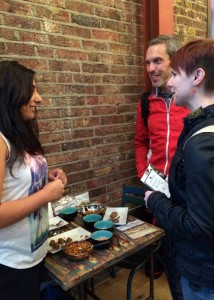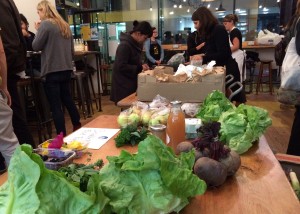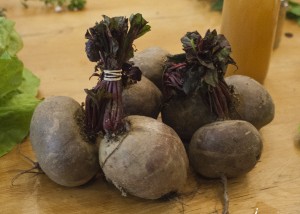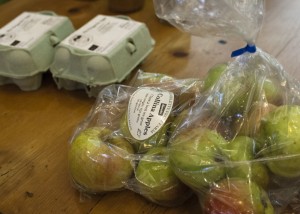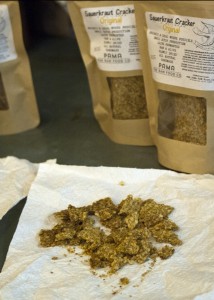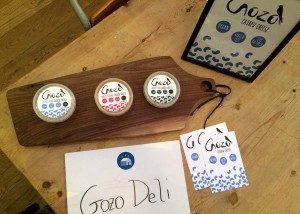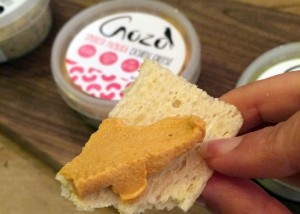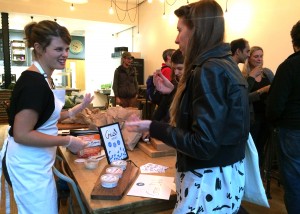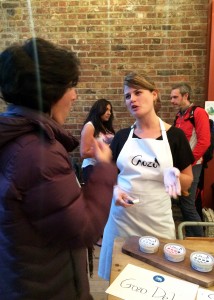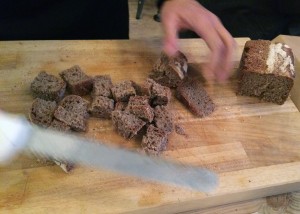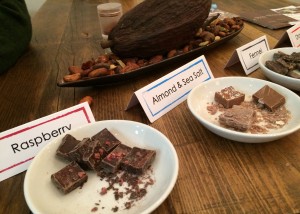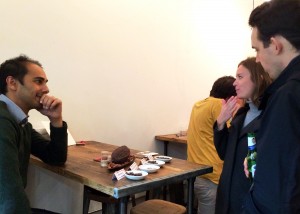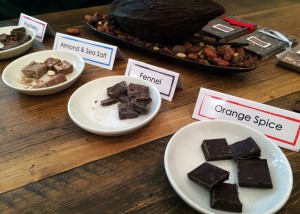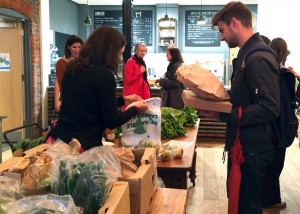Here’s another throwback story. Last July, instead of lazing at a balmy beach resort, we went north to Denmark. Copenhagen is the place to be. Have you heard?
Cycle lanes, pared down design, new Nordic cuisine and experimental beer are everywhere. There’s something about the friendly modernity in Copenhagen. The quality of life you read about in every lifestyle article.
The city offers quiet residential neighborhoods, warehouses-turned-hangouts and lots of waterfront views. It’s also known for surprise rain showers. Don’t say I didn’t warn you.
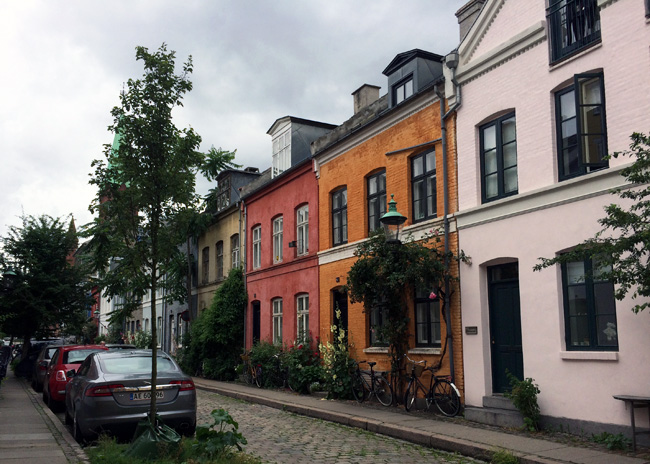
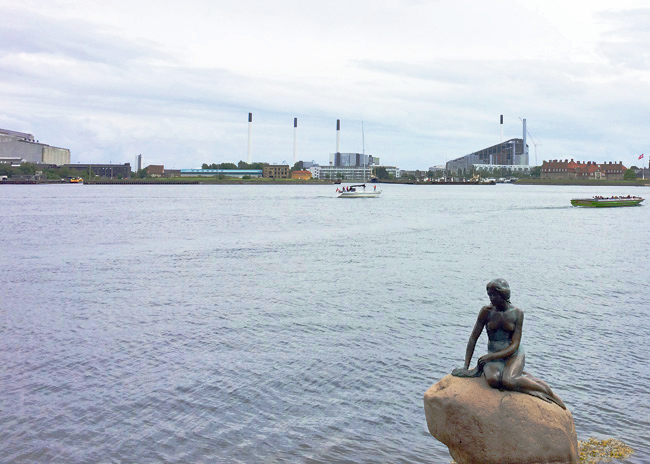
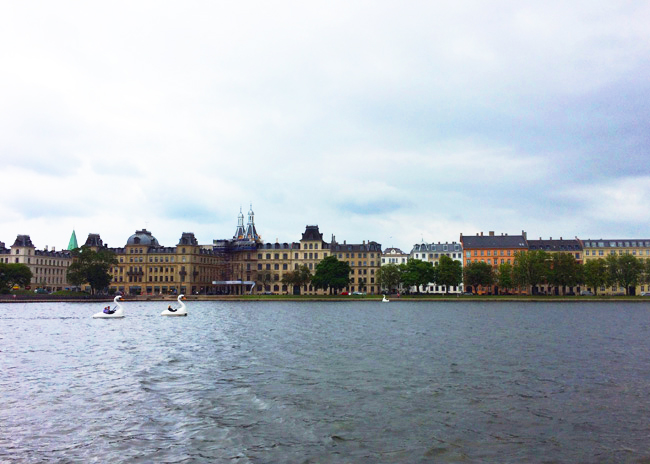
It’s an expensive place, like most Scandinavian cities, but if you come prepared for big city prices you won’t have too much sticker shock. Airbnb is big in Copenhagen, and compared to central Copenhagen hotel prices, generally a money saving option. The convenience of a ‘home’ away from home is the biggest draw. Somewhere to have breakfast, sleep in late if we want to, or come back early and watch old movies in the living room with bottles from the local beer shop.
Nørrebro – Northern Copenhagen
We stayed in the north of the city — Nørrebro — which is like the Hackney or Brooklyn of Copenhagen. Mostly trendy, occasionally rough around the edges. This is a good place to pretend you live in Copenhagen, even if only for a few days.
The former workers’ neighborhood has been home to anti-establishment (and WWII anti-Nazi) protests, immigrant communities trying to make a life in the Danish capital, and restauranteurs who couldn’t afford to open anywhere else. Now it hosts a mix of warehouses turned to organic restaurants, third wave coffee shops and solid kebab and shawarma.
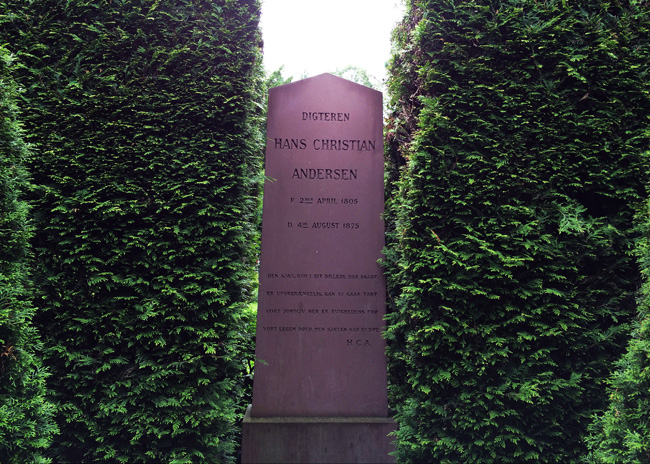
One tourism highlight of the district is Assistens Cemetery, which doubles as a park. (Hans Christian Andersen and philosopher Søren Kierkegaard are both buried there.) Apparently the Danes aren’t too freaked out by dead people underfoot, so a cemetery that’s also a public use greenspace is no big thing. It isn’t the slightest bit creepy, and joining the locals for a picnic with Hans Christian feels right. Just watch out for joggers.
Tivoli Gardens
An amusement park in the middle of the city? Across the road from the main train station? That’s Tivoli Gardens. Retro in the strictest sense, it’s a step back in time, but without the rickety structures and loose definitions of safety. This, the second-oldest amusement park in the world, was opened in 1843.

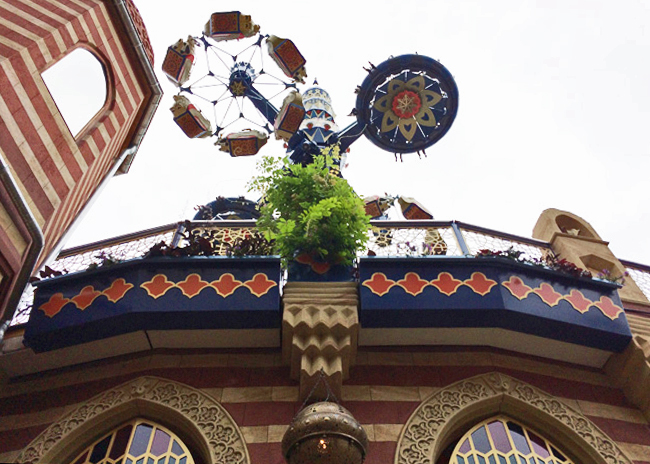
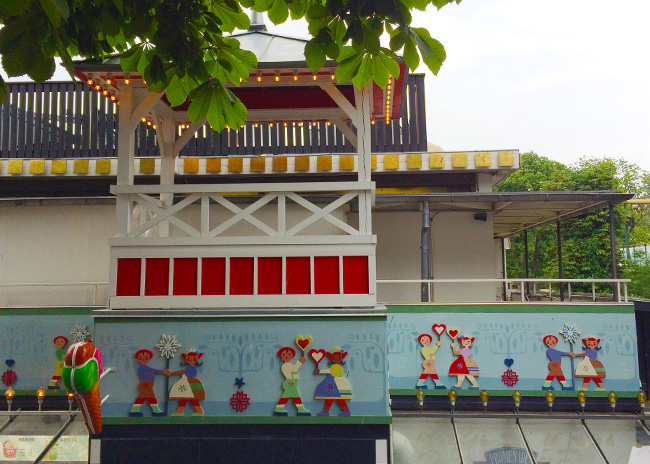
Tivoli Gardens closes for winter, so if you want to ride the Alpine mountain, you’ll have to visit between April and September. And trust me, it’s worth it.
Nyhavn – Central Copenhagen
I’ll just let the photos do the talking for this canal-side neighborhood.
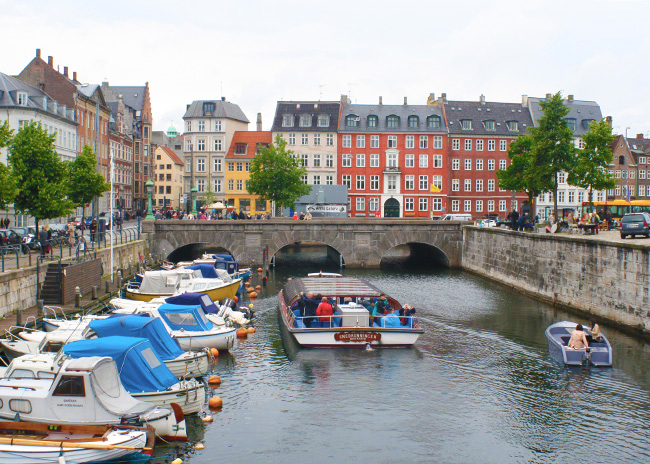
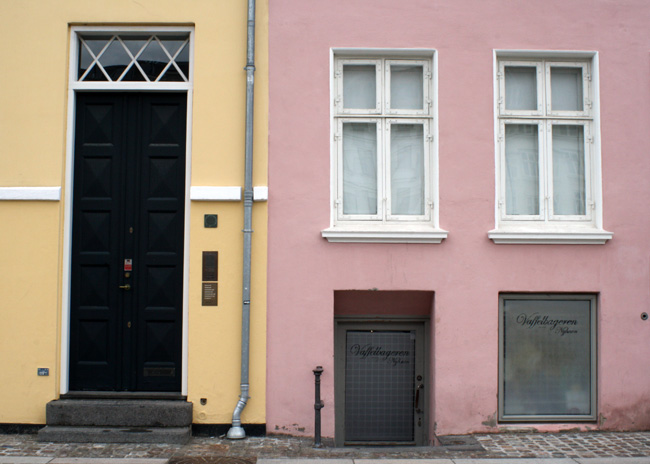
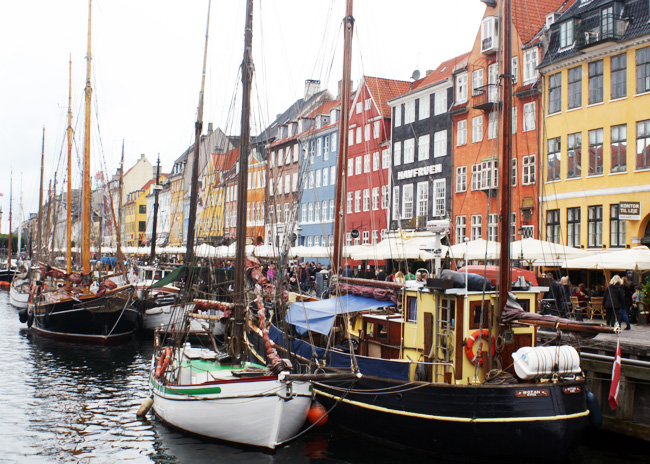
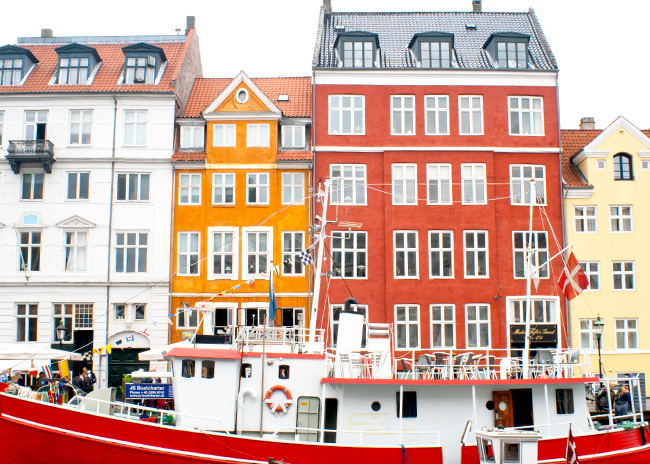
What we ate and drank in Copenhagen
Three and a half days in the city is not enough for a comprehensive culinary tour, but here are some of the highlights in Norrebro, and the rest of Copenhagen.
Baest
Baest is an organic and local product focused Italian restaurant in a fantastic corner of Nørrebro. They make wood fired pizza that’s heavy on toppings. There’s a micro-dairy on site, meaning fantastic freshly made mozzarella and burrata.
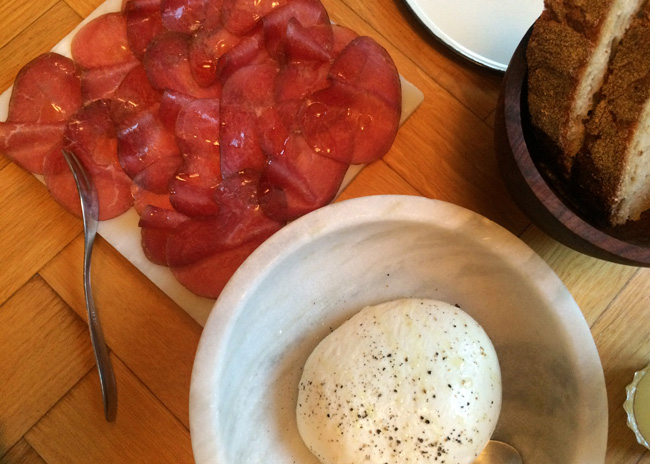
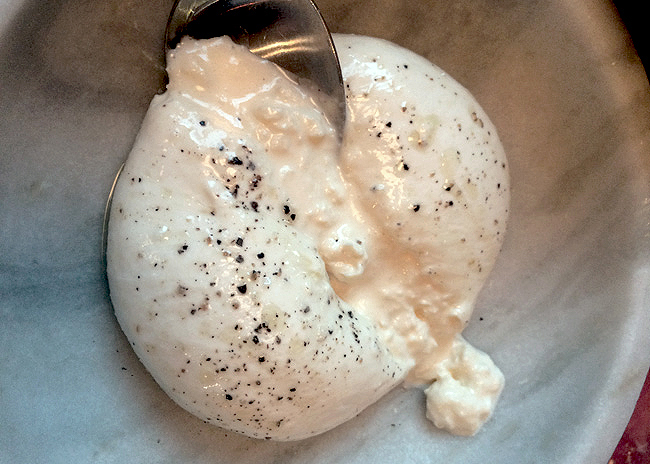
Locally cured meat from animals of one specific Danish farm are also ready for sampling. It is a pizza place, but honestly I don’t feel that’s the main draw. You could even skip it and stick to the charcuterie and cheeses. They’re the real stars. We had a lean bresaola bursting with meatiness and creamy, rich burrata.
If I were to go again, I’d go all in on the charcuterie and cheese. Maybe it’s because my mushroom and pesto pizza was a bit heavy on the toppings?
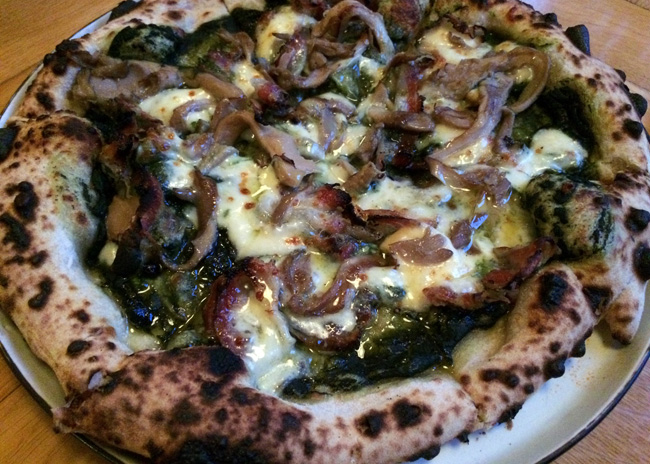
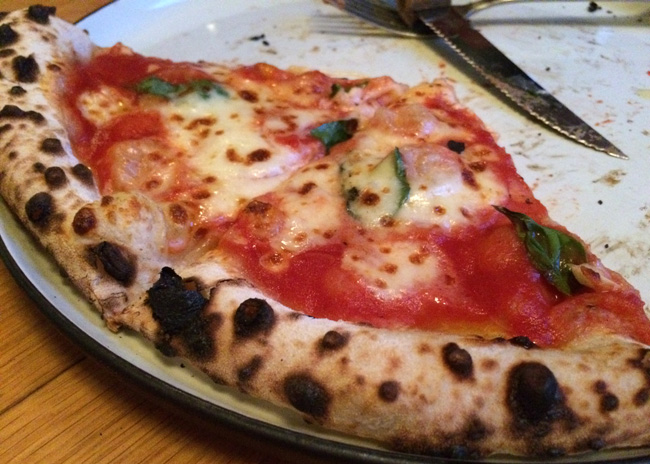
Beer (and food)
Just across from Baest is Tapperiet Brus, a bar and bottle shop from the team behind (brilliant) gypsy brewery To Øl and the Mikkeller bar Mikropolis. (More on them below.) Housed in an old iron foundry and train factory, it’s a modern, airy space with plenty of brushed steel and great beers and cocktails. The people working there are friendly and knowledgeable, the drinks selection was so good, and they’re branding is pretty great. What can I say, I’m a To Øl fangirl.
Brus shares a home with Restaurant Spontan, whose chef won a Michelin star at his previous residence. Spontan offers carefully considered dishes, the freshest and most beautiful ingredients, plus a distinct lack of fussy white tablecloth service meant this was the culinary highlight of our time in Copenhagen. Oh, I can’t forget their beer pairing menu, including a range of styles from around the world.
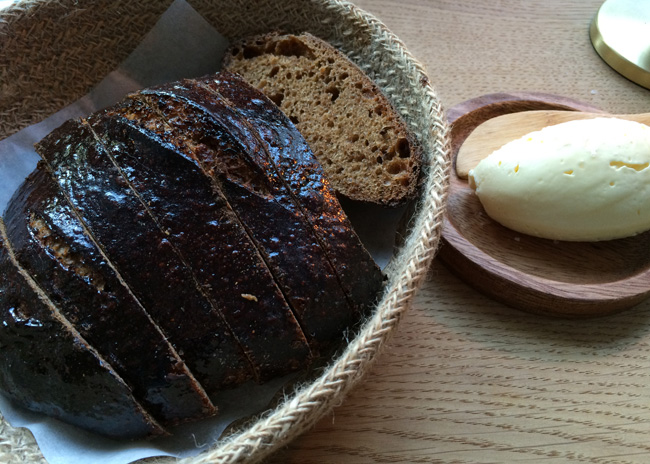
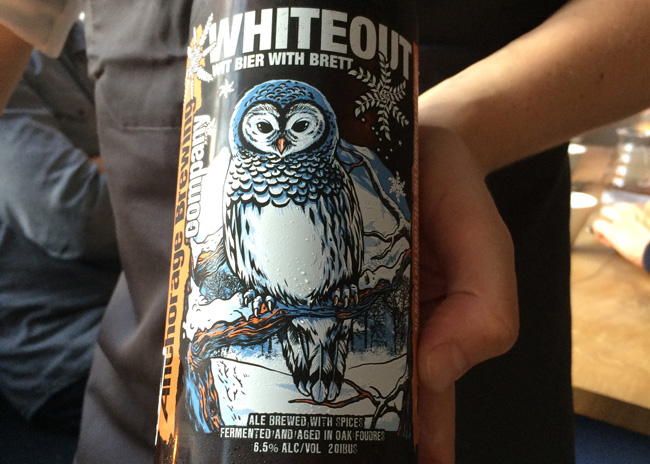
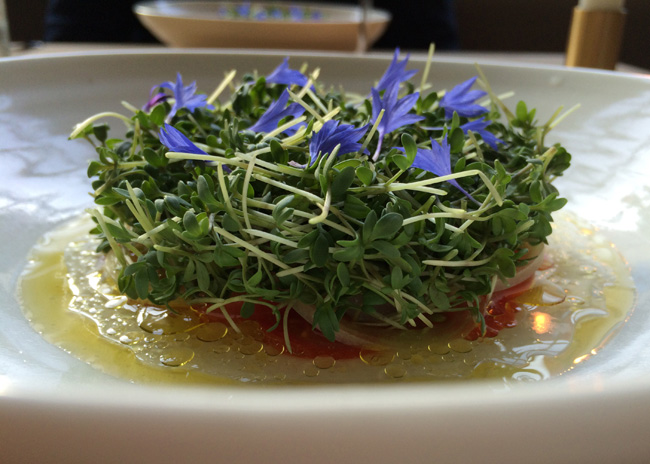
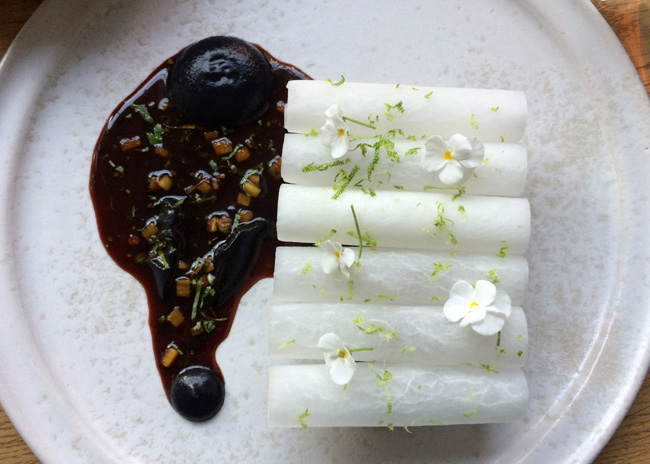
Mikkeller is probably the second-best known brewery from Copenhagen. (You’ve heard of Carlsberg, right?) Experimental flavors and styles are a signature of Mikkel Borg Bjergsø’s brews. You probably won’t find Black, their 18.8% imperial stout, at your typical local bar.
But getting your hands on a Mikkeller beer is easy in Copenhagen. If you’re there for beer, it would be hard to avoid, in fact. They currently have 8 bars, 3 restaurants and a bottle shop dotted around the Danish city, including a brand new spot called Haven.

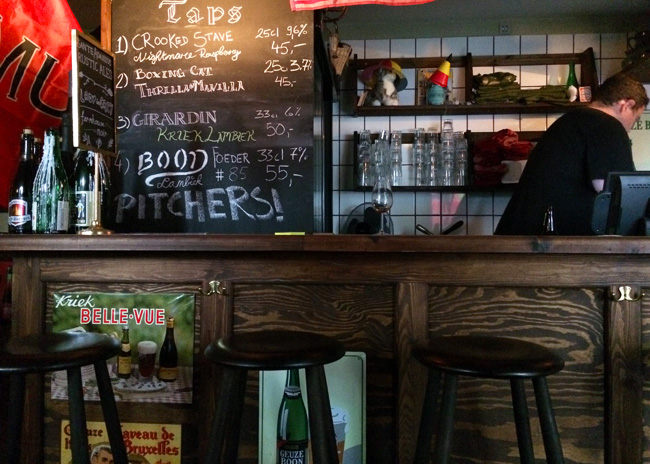
Some of the highlights include their old-timey looking sour beer bar Koelschip, a “tribute to Belgian beer” and the neighboring Mikkeller & Friends, and the bright, colorful Mikkeller Bar in Vesterbro, I’m kicking myself that we didn’t try Øl & Brød (beer & bread), their smorrebrød-focused spot.
Speaking of Mikkeller and food…
Ramen tu Bíiru (Ramen and Beer)
Mikkeller also has a spoon in the city’s ramen trade. Modeled after quirky ramen spots in Japan, at Ramen tu Biiru you place an order via a “ramen vending machine”. It then prints a receipt that you take to the counter. It’s a little labored, but bear with it.
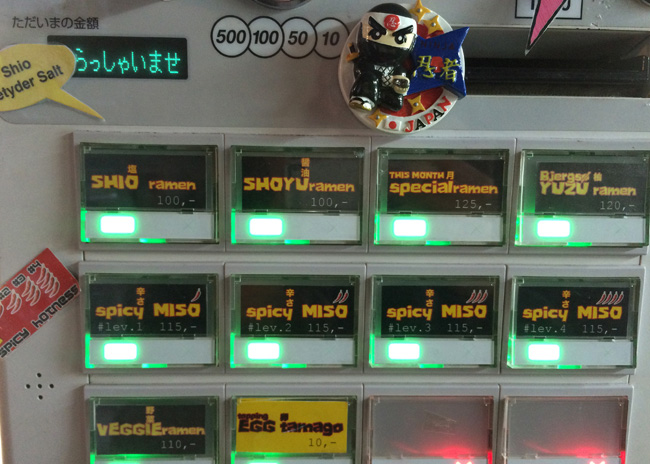
Bench seats in a small and very popular spot mean this isn’t the place to dawdle over your slurpy noodles. The ramen, by the way, are actually good. It’s not at the level of choosing the tenderness of your noodles, but they do offer rich, satisfying bowls of umami and warmth. Considering this is technically a brewery doing ramen, it was hard to know what to expect.
The menu includes shio, shoyu and miso ramens – so both meat-lovers and vegetarians are accommodated for – and a range of Mikkeller beers chosen for their ramen matching abilities. Mikkeller also has an eponymous beer specially created to complement the soupy noodle bowls.
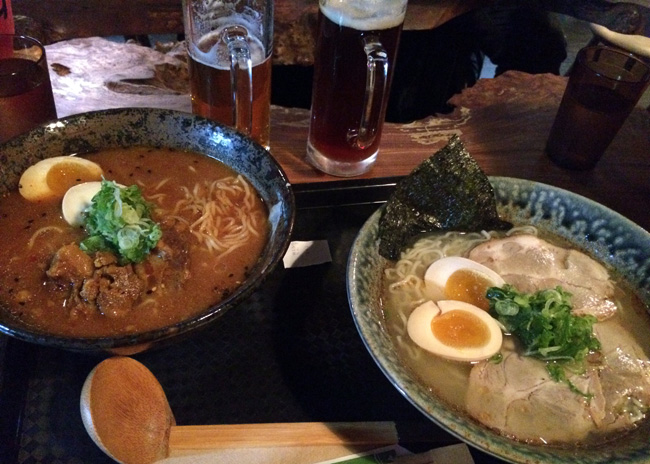
The original is in Vesterbro. We didn’t stop in, so I can’t say if it’s less busy than the Norrebro outpost.
Smørrebrød
Dense, moist rye bread is buttered and topped with pickled or fried fish, pate, cold meats or cheese, plus plenty more toppings.
This is what I looked forward to trying most. But open-faced sandwiches (Smørrebrød – stuff on bread) were not the revelation I’d hoped for. I only experienced a 50% success rate for smørrebrød enjoyment.
Skip the central market’s huge line and carve time in around midday for Rita’s Smørrebrød. With a deli-style counter and about 3 seats, this is where the locals go for lunch. And I’m not kidding – get there early because the sandwiches move quickly. This isn’t a fancy place, and a lot of their stuff-on-bread isn’t the most Instagrammable. But you’re not the kind of person who lets that stop you from eating something … right?

Hot dogs
Hot dogs: the street food of Denmark. In true Copenhagen style, the best hot dogs are traditional with a twist.
Døp is an organic hot dog stand offering franks made from a range of sustainable meats, and even vegan ‘meat’ in a sourdough bun. Choose your sausage, then your bread and finally your toppings. Ever had kale on a hot dog? Why not?
I had the goat hot dog, and as someone who likes goat, I thought it was … delicious.
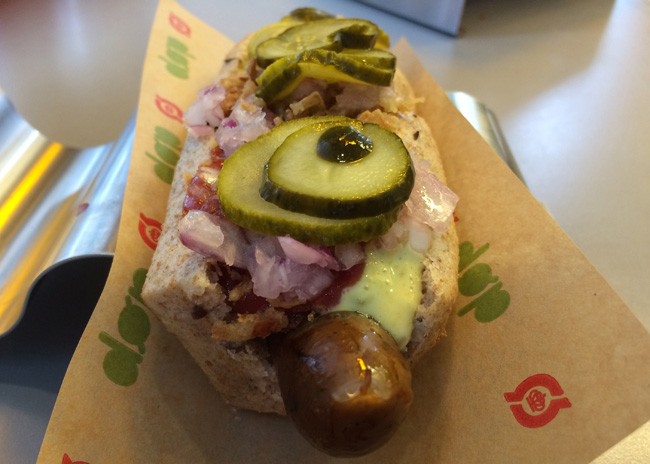
John’s Hotdog Deli is a food truck outside of the city’s main train station, and just across from Tollhavn. I know it’s not the most inspirational location but it’s just good business sense. Can you imagine a more practical place for a hot dog? Stop for a quick bite if you’re catching a train or visiting Tivoli Gardens. Truly worlds better than the hot dogs you’ll find inside the park, it’s worth the early lunch.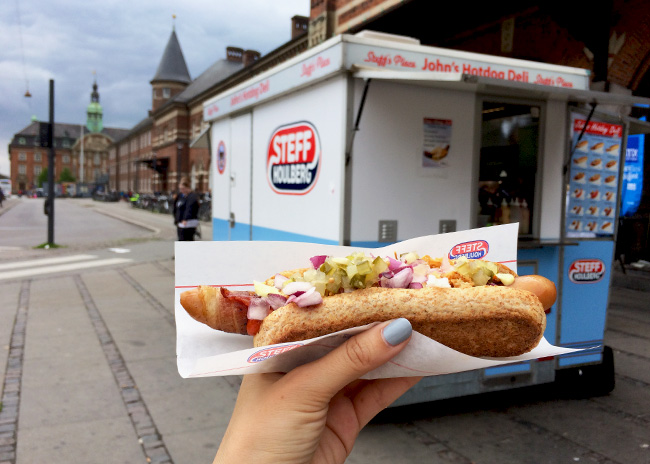
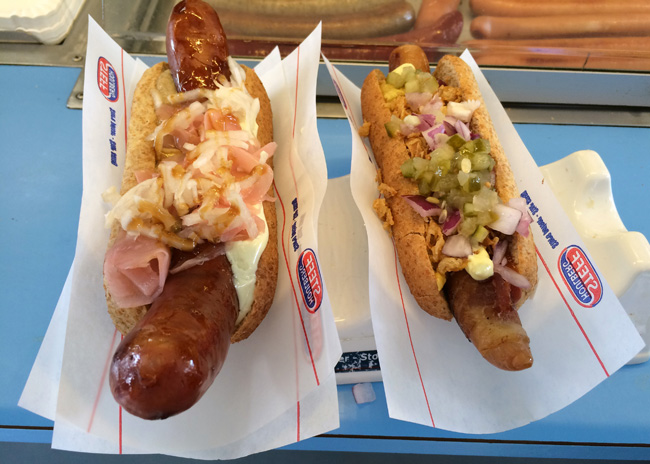 Papirøen’s food market
Papirøen’s food market
Before Papirøen’s (Paper Island) reincarnation, the island housed a series of paper storage warehouses, hence the name. The neighboring science and tech museum Experimentarium would be a good place to take kids or adults who love hands-on exhibits.
Copenhagen Street Food is a range of international food stalls based in one of the once-abandoned halls. From doughnuts to duck burgers, pig out to your heart’s (or wallet’s) content.
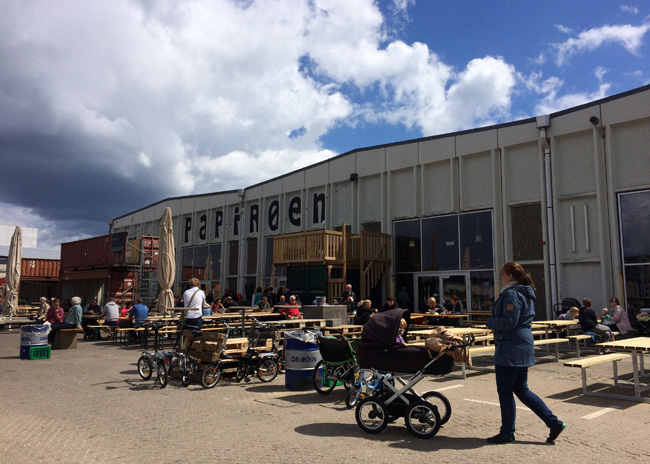
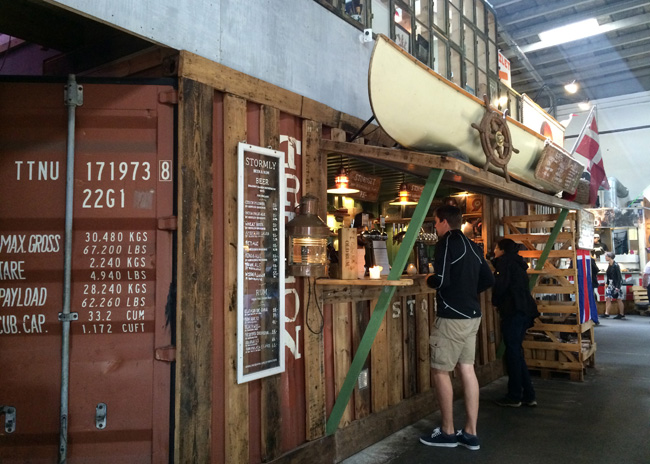
Also worth a mention…
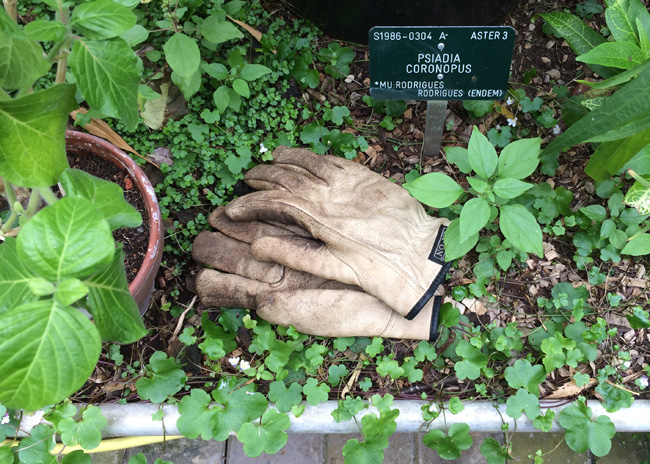
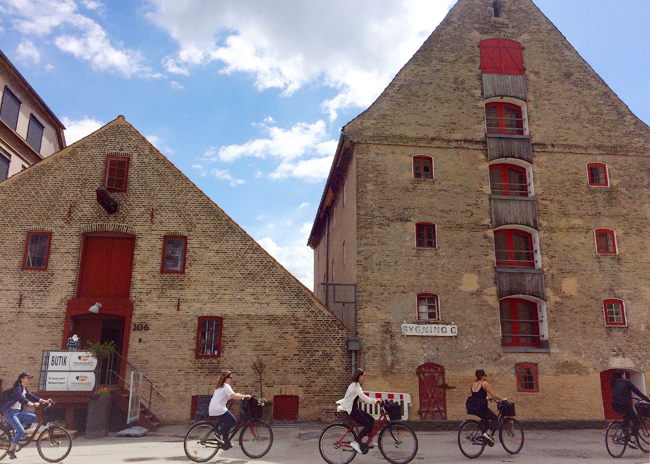
Mother is often referenced as the best pizza in Copenhagen, but we didn’t have a chance to try it. Next time.
The Coffee Collective – they have a few cafes around town with a focus on the beans and the farmers who grow them.
Botanical Garden. With a mix of indoor greenhouses and leafy green outdoor paths, this is a great place to visit if you get caught in one of Denmark’s rain/sun/rain/sun events. It’s beautiful.. and free!
Cycling. The traffic system for bicycles is the most organised and safest-looking I’ve ever seen, even compared to Amsterdam. If you like cycling (I don’t, to be honest), rent a bike and become one with Copenhagen. Some Airbnb hosts even let guests borrow their bicycles.
If you have time and don’t need a visa, take the 30 minute train to Malmö for a day in Sweden. Fans of The Bridge would especially get some joy out of it.
]]>It’s nearly the end of a very interesting and hopefully unusual year. From a completely personal perspective, ignoring all geopolitical ramifications, it’s been a pretty good one. I’ve made progress with some of my goals. Some of them cut significantly into my blogging time – in case you haven’t noticed. I’ve also visited new places and met some great new people.
As for the world as a whole, well that’s a different story. But we all know what 2016 has been like.
One of my goals for the year was to see more places, and I luckily had the chance and motivation to do it. With my EU passport in hand, I enjoyed the luxuries of seeing living, breathing cities and playing the ‘what if we moved here’ game.
Way back in May, we visited Budapest for the wedding of two lovely friends. Since we had a week there, we also snuck off to Vienna for a day. But there was plenty to see and eat in Hungary for one post, so you’ll just have to be patient.
Budapest is like two cities in one, the Buda side of the Danube is quieter, and full of the regal, stately buildings you’d expect in the co-capital of a former empire, while the Pest side is trendy and great for a night out.
We arrived at our beautiful Airbnb, right near Parliament on the Buda side of the river to the open-air musical tones of a street fair. Our bags safely dropped and our hunger calling us outside, it was time to explore.
First step: Get some pompos. It’s a Hungarian pizza, a bit like langos but not deep fried. Smothered in sour cream and smoked pork, it was great company for our wander through the market.
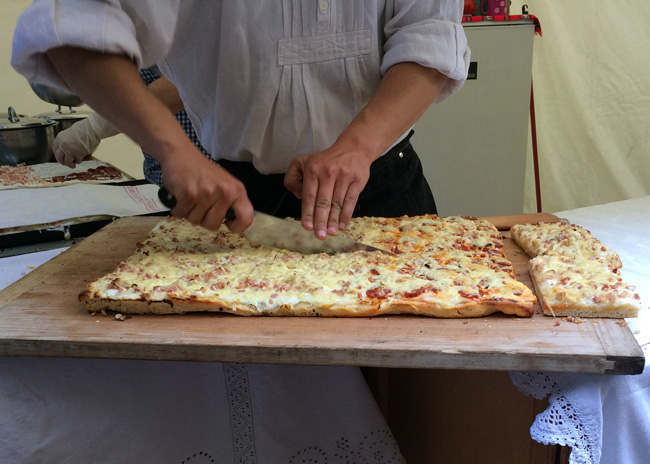
Next step: Get to know the neighborhood. The Hungarian Parliament Building has a prime spot alongside the Danube, and it’s made it through a lot of history, including the begrudgingly shared Austro-Hungarian empire and that whole First World War. Sure is pretty though.


The Danube is huuuge! Because I live near the Thames, I just expect every city’s major river to be similar… but this river, which runs through 10 countries, is a whole other kettle of fish.

Soon enough, it was time to visit Pest. To get a drink in one of the most unusual drinking spots in the world, you have to hit up one of Budapest’s famous Ruin Bars. Szimpla Kert is probably the best known and the most popular.
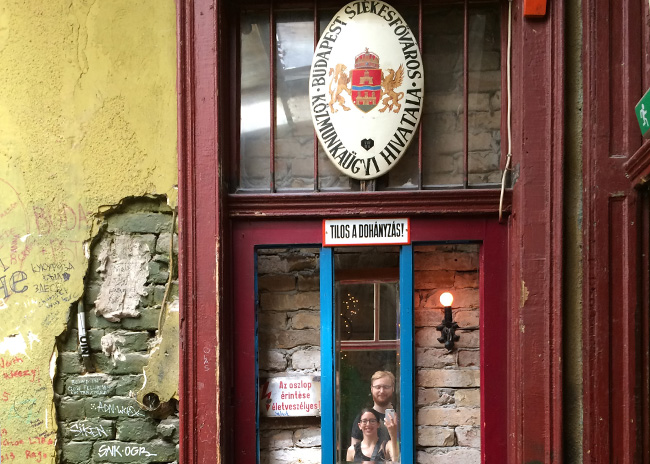
On Sunday mornings, they also have a farmers’ market. You can get all sorts of locally-produced goodies, including Mangalica ham, fresh cheese (including the ultimate in romance – a heart shaped soft goat cheese), honey and plenty of fresh beautiful veg to stock your Airbnb minifridge.
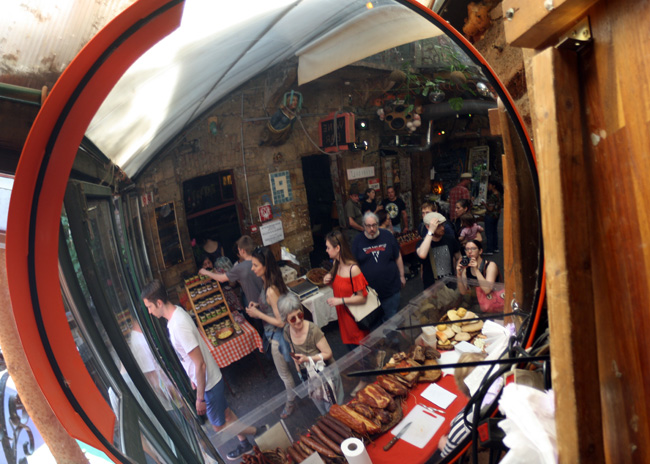
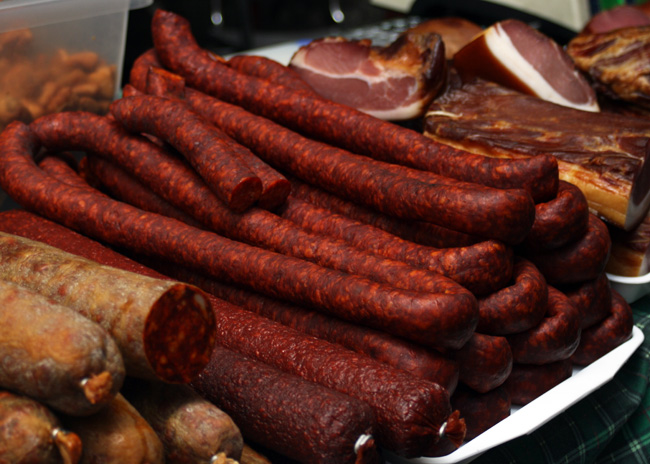
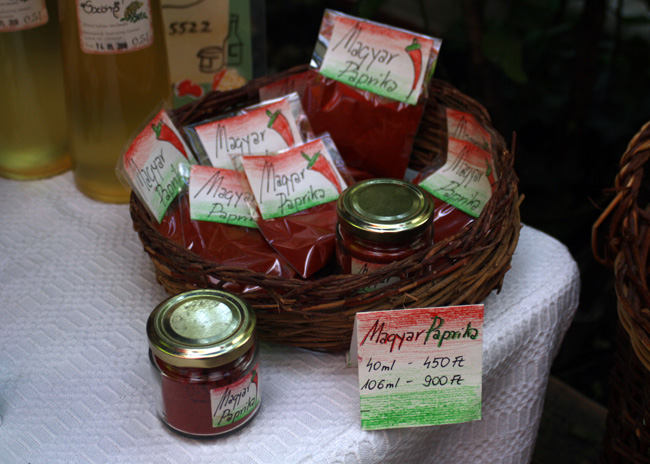
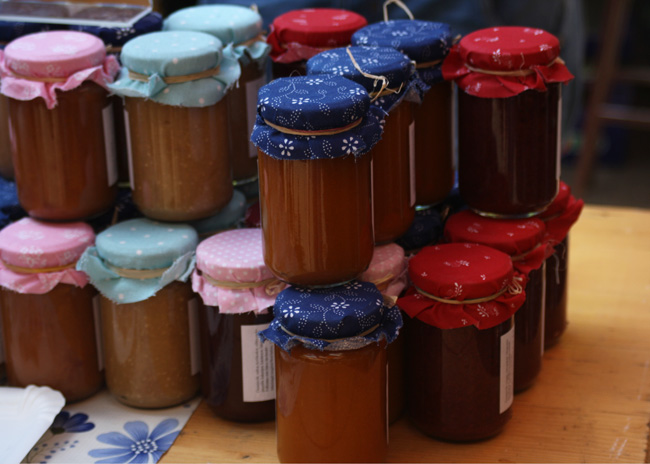
Obviously we also found our way to the brightly colored street food market. I think we might have better appreciated the beef goulash on a day that wasn’t 25C/77F, but an ice cold beer helped.
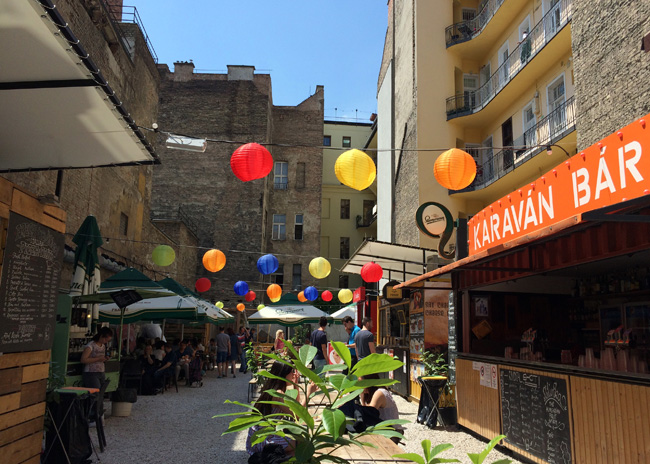
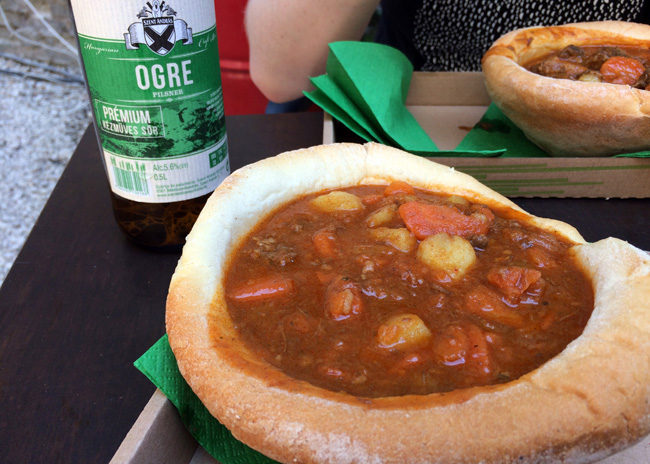
The Great Market Hall is a mix of food stalls and tat shops, but if you need a £2 souvenir for someone, this is the place. There are also some good baked things to sample, and though we didn’t get any, the veggies looked fresh and tempting.
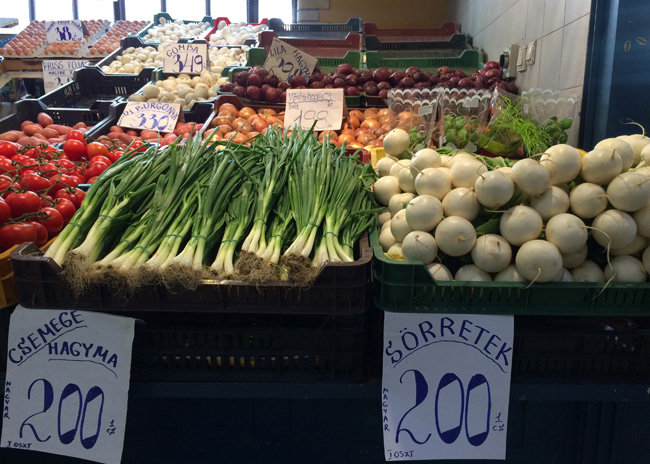
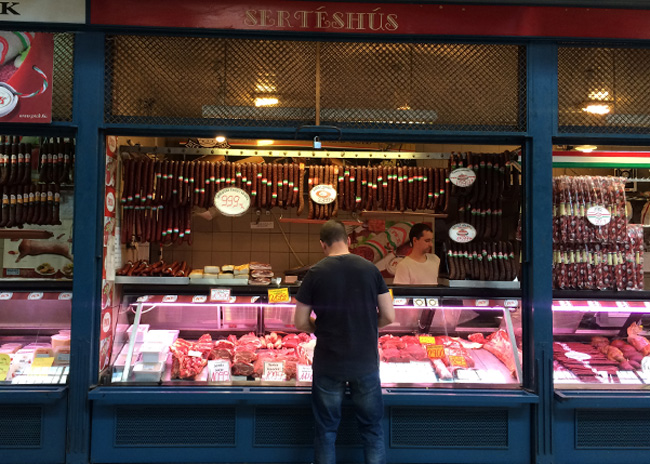
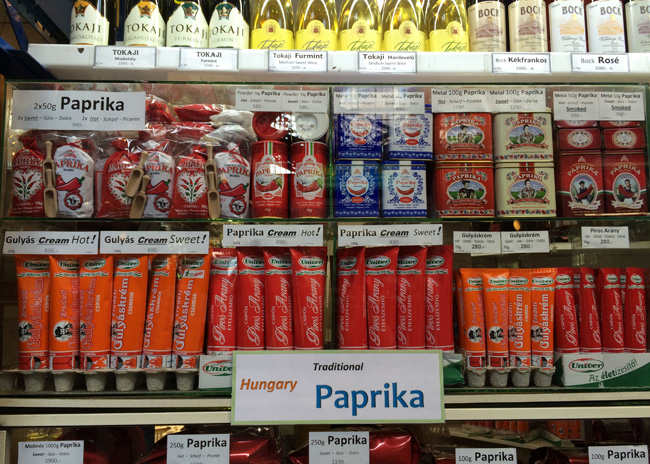
I was truly not interested in the jostling queues and the irate people running the hot food stalls, so we escaped and grabbed a quick (and surprisingly really good) kebab from a spot. (It wasn’t nearly as fatty as my photo makes it look – I promise.)
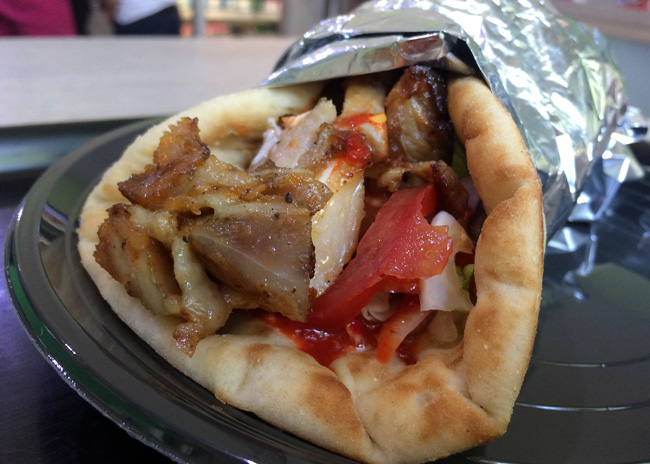
One of my favorite places to visit was Margaret Island, an oasis in the middle of the river. Go for a peaceful walk along tree-lined paths, spot the well-manicured make out corner (seriously… it was really hot and heavy over there), and then stop off at the beer garden for some refreshment.
There’s a lot more to see, including a musical fountain and a small zoo, and on a hot day you can escape the heat at the swimming pool.

A good post-beer, pre-fountain show snack.
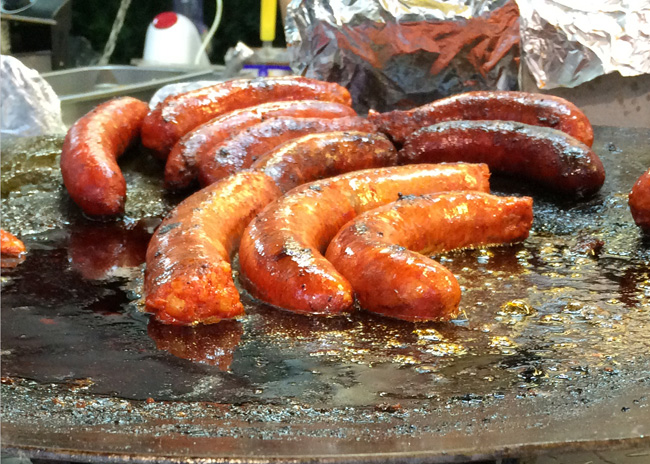
Obviously I had to buy a pastel plate when I saw this set up…
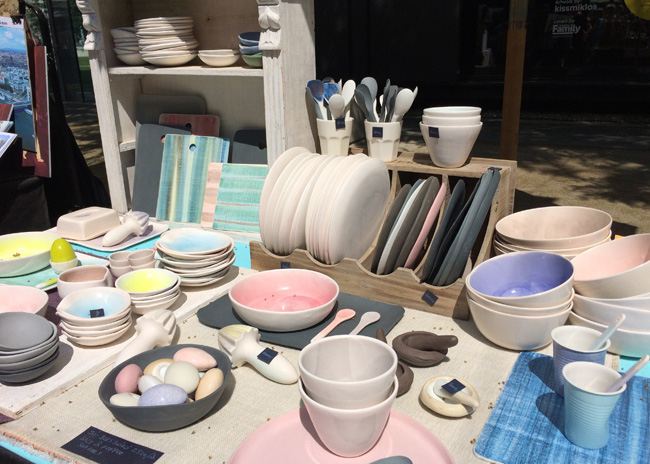
The city has some great vantage points, including Gellert Hill and Buda Castle. You could take a funicular up to the castle, but if you can face a walk, I would recommend it.



The views are pretty good – and a little less jarring than the Soviet era statues.


After all that walking, scoops of fig and stracciatella ice cream were a must. Levendula has a few locations across Budapest, and I’d recommend a few scoops if you have the chance.
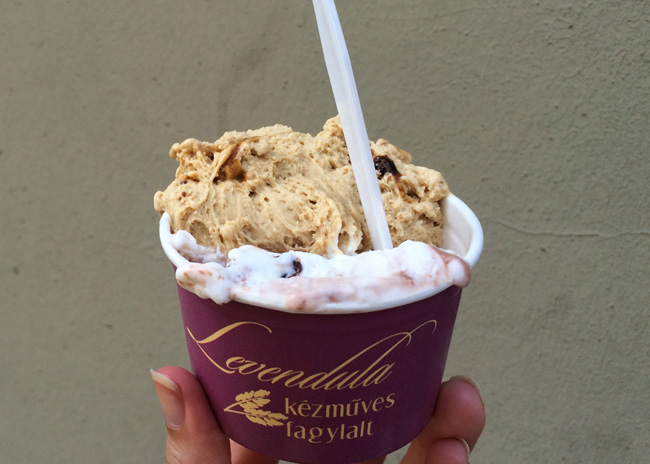
A stop off at a craft beer bar was also essential, and Ganz Söröző was a nice place to rest our weary feet and cool off. It’s the kind of place that doesn’t seem to exist in many big cities – where every single beer is hand-picked by a proprietor who is enthusiastic to talk through their merits.
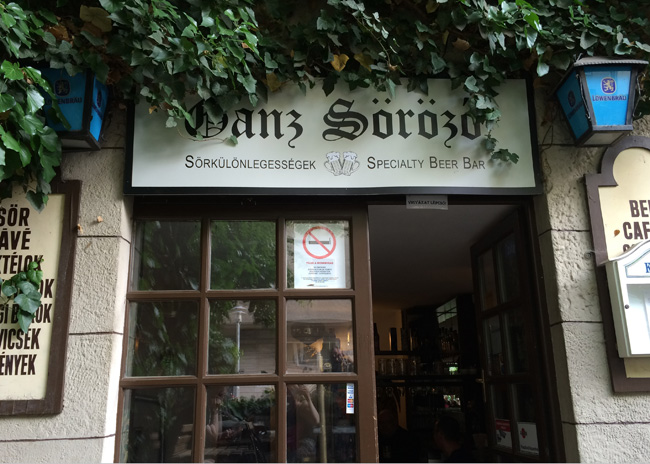
For a special dinner out, we went to Mák Bisztro (in English, poppy seed bistro) just minutes away from Parliament. This modern Hungarian restaurant showcases seasonal Hungarian produce, in some non-traditional ways.
The friendly, relaxed atmosphere is just right after a sunny day of sightseeing. Plenty of whitewashed exposed brick and easy on the credit cards … especially if you’re used to New York or London prices.
Here are just a few of the dishes we had: A starter of trout with pickled green rhubarb.
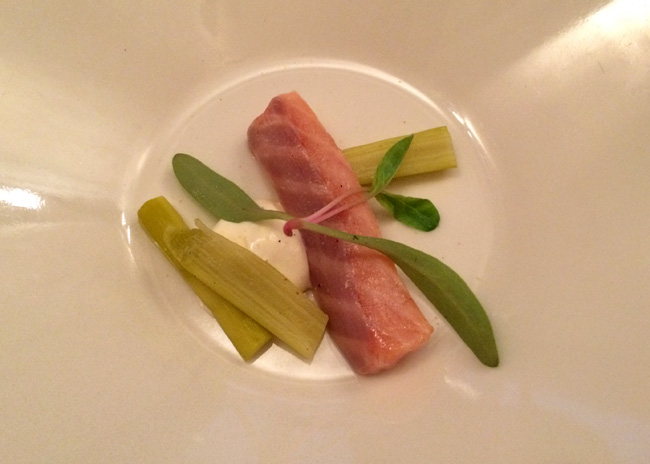
Another starter – scallops with green peas, green strawberries, clover and a bright, fresh green sauce. 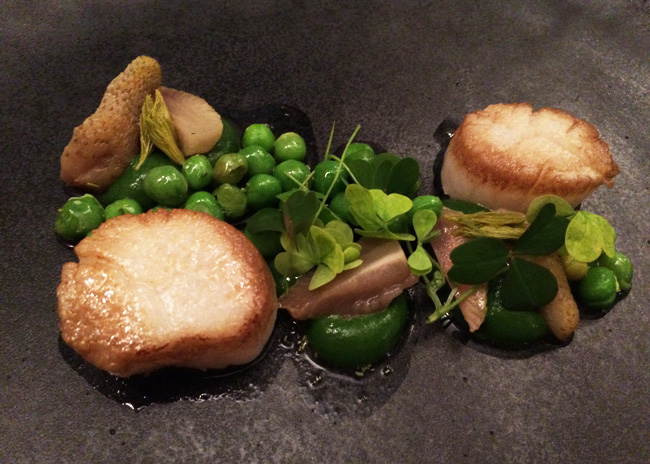
The famous Hungarian mangalica pork in filet-form with breaded Jerusalem artichokes and fairy-ring mushrooms. (So savory!)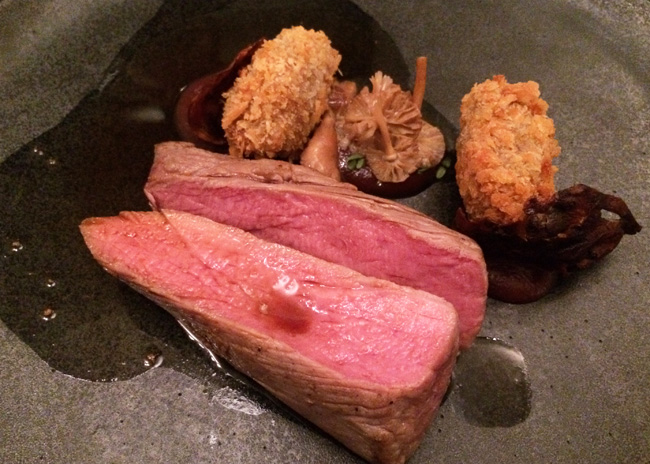
Chocolate and rhubarb a few ways. A great sweet, savory and fresh combo.
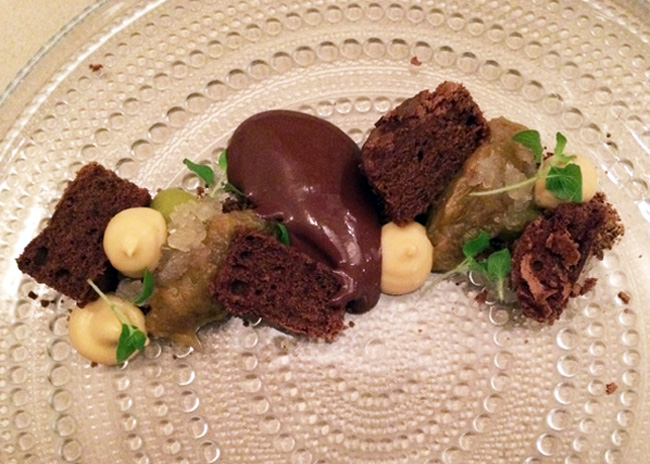
A few blocks from City Park is the Goat Herder espresso bar. We had the absolute best coffee of the trip, coupled with a delicious homemade toffee and walnut cake.
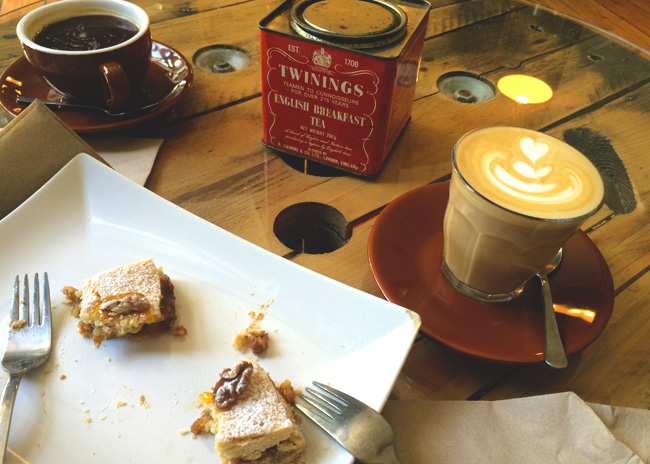
Thank you to Budapest for the great week! While I didn’t take any photos for obvious reasons, we also visited some of the city’s famous baths. Even on a hot day, they’re worth a visit.
Eventually, we had to say goodbye to the view from our Airbnb balcony and leave Budapest behind.
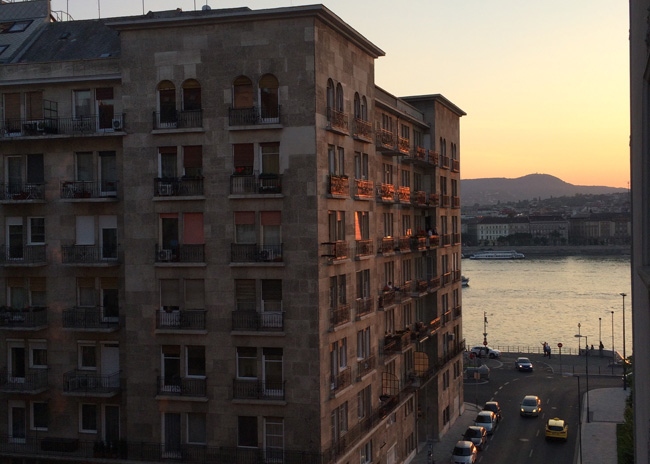
But! That’s not all. We stayed at a quirky hotel for horse riders, stables and all, the night of the beautiful (and entirely in Hungarian) wedding.
I couldn’t share this post without documenting the stewed pork, potatoes and red cabbage lunch that cost a whopping £3.50.
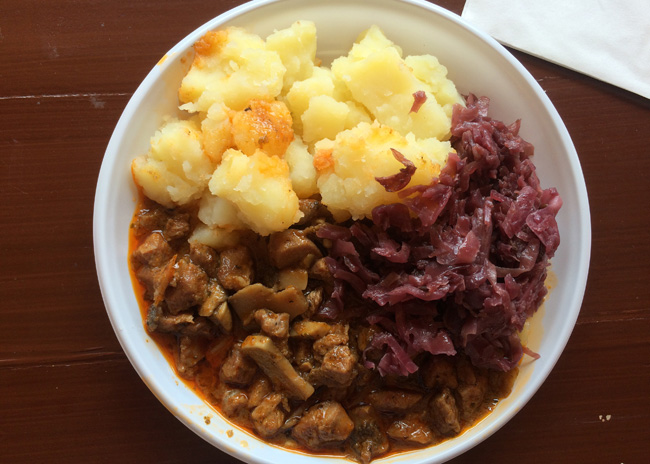
Bonus: Wedding photo, including Converse <3

Did you know … ? To be considered milk chocolate in the EU, it needs to be at least 25% cocoa solids. Chocolate is only considered dark at 70%.
Recently, I got a chocolate lesson, plus a whole lot of sweet – and fizzy – stuff at Hotel Chocolat in Victoria, London.
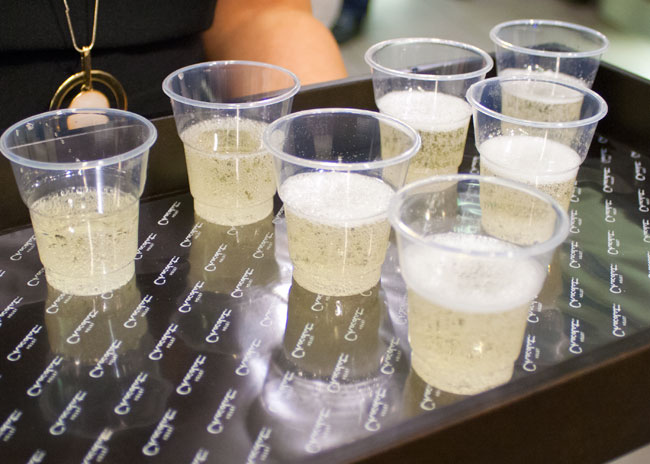
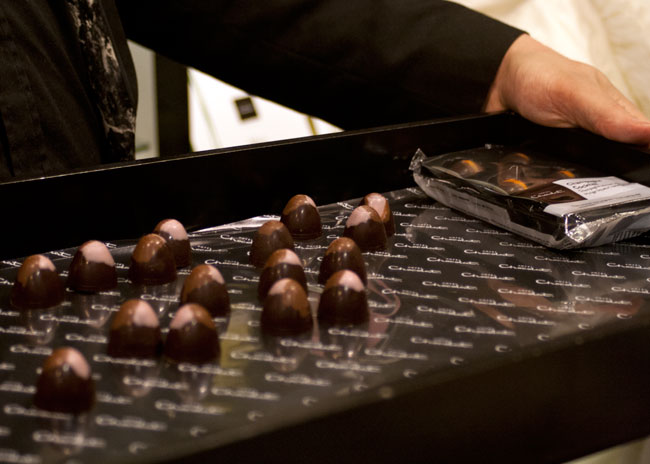
In between samples, we learned about the recent history of chocolate, and how tastes have changed and changed back again.
Historically, chocolate was very different – and by that I mean more bitter – than your average chocolate bar is today. Speaking of, chocolate bars came to be in 1847, in Bristol, England. Did you know chocolate bars were English? Neither did I. (So is the internet – no matter what Al Gore says.)
Until the 20th century, chocolate was considered a luxury, and it was generally heavy on the cocoa solids. It all really changed because of World War I.
Food supplies were a concern, and importing was much more difficult, so chocolate had to change. Companies like Rowntree’s and Cadbury got creative and stretched their cocoa further. Maybe you’ve heard of some inventions from that era, like Snickers, Kit Kats and Rolos.
But little by little, the chocolate experimentation has gone the other way, to more chocolatey dark chocolate, with a higher cocoa percentage.
Which leads right into Hotel Chocolat, where I snapped a piece of chocolate next to my ear, and was offered more samples than I could eat. And they didn’t even ask me to write this post – seriously.
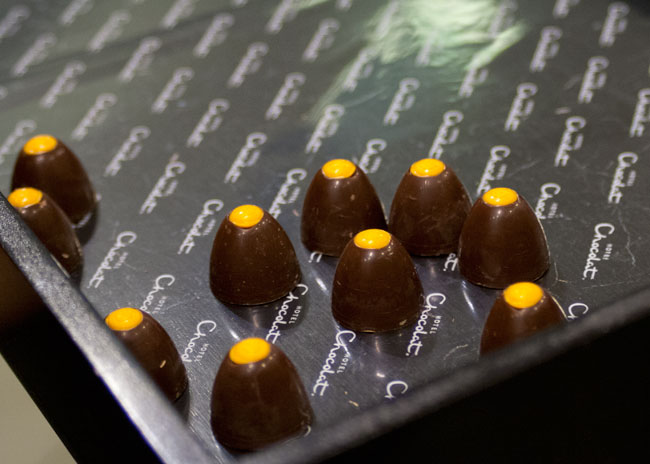
Hotel Chocolat have been making chocolate for 28 years from their factory in Cambridge (how great must that neighborhood smell…) and they are in charge of the whole process, from bean to bar.
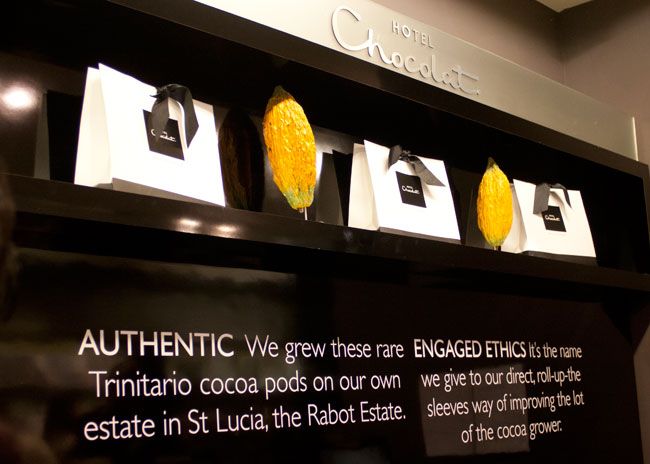
Their dark chocolate is heady. Rich and lightly bitter, the taste lingers. Everything about it feels luxurious. Break it in to pieces and listen to the snap. It’s completely different from the average chocolate bar. It fights back against you, just a little, before melting down into chocolately bliss.
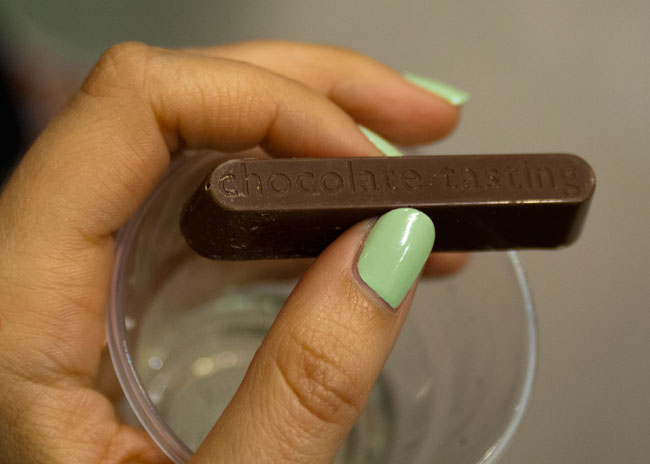
Milk chocolate? Still rich. Sweet and creamy. Still snaps. So luxurious that you don’t even need a whole bar before you’re satisfied. Does that make it lighter calorie? Let’s say yes.
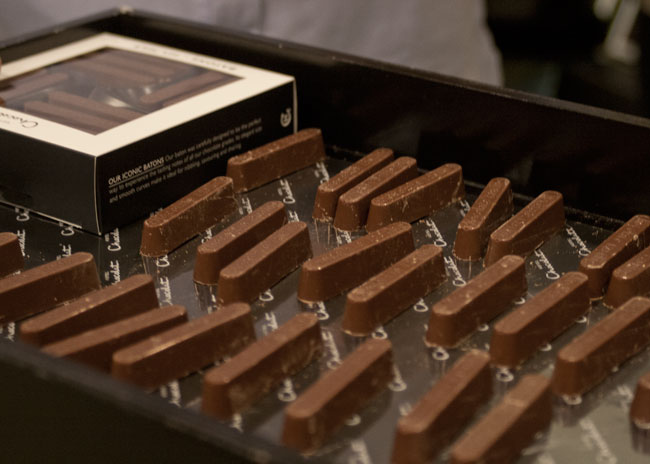
White chocolate, meanwhile – still not my favorite, but Hotel Chocolat’s contains 36% cocoa, which is the same amount as in a bar of Dairy Milk. Yep.
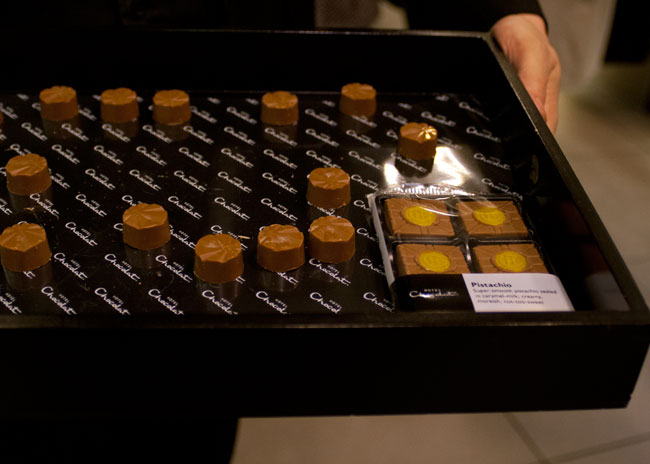
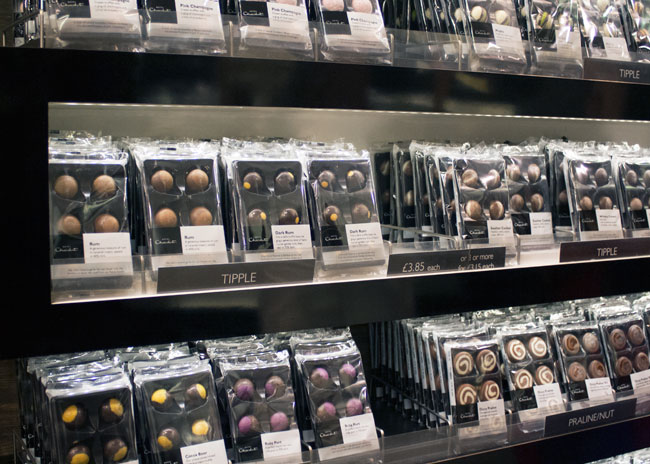
Oh and before I forget. Did you know you could get a cocoa pesto? And a cocoa gin? When you’re out picking up bars of chili chocolate and Mississippi mud pie, don’t forget the cocoa bitters for your cocktails.
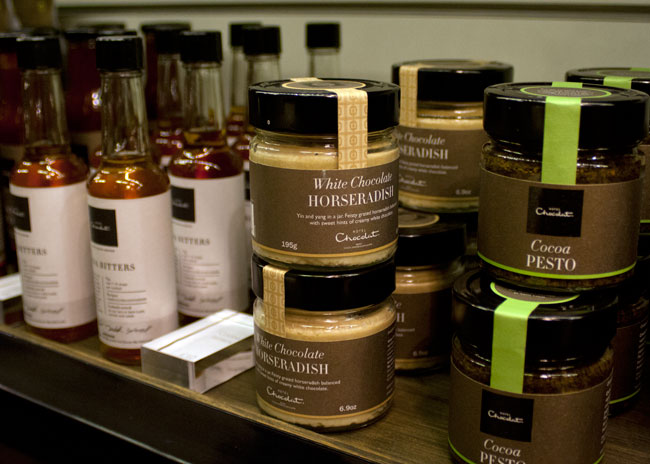
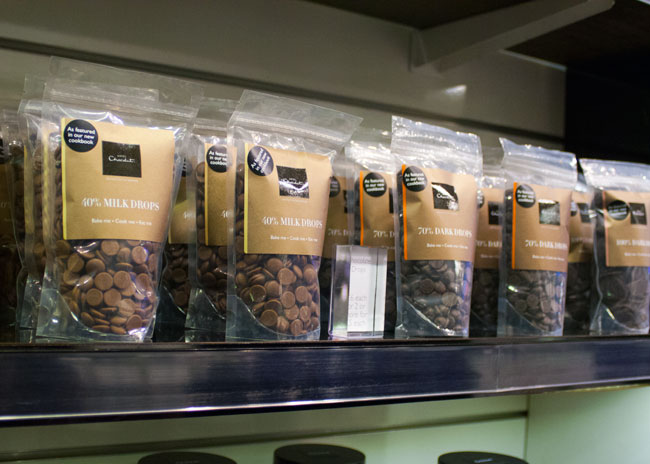
Soon enough, I’ll be turning some 100% chocolate into a Mexican mole sauce. Wish me luck. And if I can get it right – you might just see it turn up here.
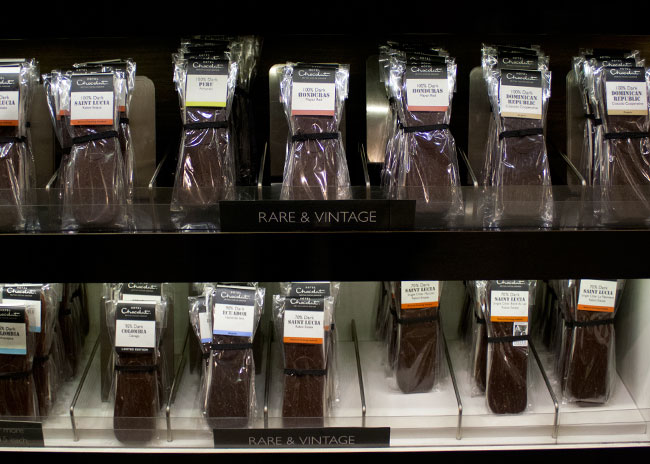
Recently (but maybe not as recently as I’m willing to admit), it was Urban Food Fortnight, which celebrates the best of London’s local food scene of small producers. It’s a pretty cool way to meet and eat, and learn more about how big cities are no longer so far removed from our food supply as they used to be.
The Old Street Food Assembly celebrated with a tasting event, including local producers and growers who all sell through the Food Assembly.
If you have no idea what I’m talking about, let me explain. The FA (not the football one) is a concept that started in France, and lets you pre-order directly from small, local suppliers within 150 miles of the Assembly. Then, when the pick-up day comes, you turn up, meet the producers and take home the bounty.
So when my Food Assembly announced a Tuesday evening tasting, you know I’d be there. Several luscious snack servings later, and dinner didn’t seem like a necessity anymore.
Rich reds and oranges on crunchy peppers, sharp and herbal cheeses, funky new jam flavors, smoky cashew spread and punchy fruit drinks with cayenne … and that’s just a start. Such a great way to introduce producers and purchasers.
But really, I should let the food speak for itself.
]]>A few bank holidays ago, (May 2, 2015, to be precise) the gent and I visited the Melton Mowbray Artisan Cheese Fair, with no idea what to expect. The things we knew were: it was on for 2 days, it was in May, and there would be cheese. How much of it, and how good it would be we decided to take a chance on.
Spoiler alert.
There was a lot of cheese, and it was very good. And there was gin. It was also very good.

Welcome to Melton Mowbray
First, a little about Melton Mowbray. It’s a small town that’s known for two very big foods in Britain, though if you’re reading this from Britain, you probably already knew that.
I have to confess that I’m not a big pork pie fan, generally… I’d never been convinced that they were worth eating. The examples I’ve had were always too fatty, with really dense, lardy crust and cold pork in the middle. Honestly, even the best pork pie is probably not going to convince me that any of those things aren’t true. However, when in Melton Mowbray… We split a stilton pork pie, and the sharp earthiness of blue cheese really helped balance the fattiness and richness of the pork/pastry combination.

The fair itself was interesting and busy, but not too over-crowded. It only cost £2 to enter, which is apparently twice the price of previous years, but well worth it.
The weather the day we visited was pretty terrible, so that might have scared a few people away. There is a lot of jostling and pushing forward for samples, which can be a bit trying when you want to sample something, talk to the producer or take a photo, which is why some of my photos ended up being at pretty weird angles.
If you got the opportunity to speak to them, most of the producers were friendly and keen to talk about their wares. Most of the people there really were small (or fairly small) providers that you wouldn’t necessarily find in your local supermarket, so it was nice to get insight into the joys of cheese making, gin distilling and making cheese-making kits.
There were around 75 different stalls across the cattle market and they included cider, bread, ice cream, wine, and cheese of course… there was no lack of great British products.

A soft, white unpasteurized cheese, and my favorite of the fair, from Chalke Valley Cheese.

Even after a train ride home, the Dorset White was perfect. Creamy, spreadable and so delicious.

Loosehanger had very dedicated cheesers manning their stall, and a lovely blue goat cheese.

Stichelton’s unpasteurized stilton definitely came home, too. Complex in flavor and so pretty to look at.
We ended up taking 6 cheeses home, and it took serious willpower to not buy more than that. There was the creamy Dorset White from Chalke Valley, a blue goat cheese called Nanny Williams from Loosehanger Cheese in Salisbury, a beautiful brie-styled cheese from Tunworth in Hampshire, a traditionally full flavored blue (yeah, there’s a theme) from Cote Hill in Lincolnshire, a deliciously strong, aged Red Leicester made by Leicestershire Handmade Cheese, and finally, a beautiful Stichelton, which is exactly a stilton, but made with unpasteurized milk.
There were also some very interesting talks on, most notably a history of Stilton cheese, from one of the UK’s big stilton producers. It was a great explanation of how the Midlands became a home base for many foods (as it was a natural stopping point for people traveling through the country), how much of an effect war rationing had on cheese production (immense) and what makes a stilton a stilton.

But I can’t wrap up this overview without talking about the two gin distilleries we tried, both of which were fantastic. Recently I’d had a bad run of picking gins without tasting them, but we were very confident about taking both of these home… after sampling them. Burleigh’s Gin has robust flavor and uses citrus and spices to great effect.

The second tried-and-loved distiller is called Da Mhile, from Wales. While there’s an interesting version with seaweed as a botanical, we stuck to the regular gin, which is made with mint. I was skeptical at first, but the mint isn’t overpowering at all, and adds an interesting fresh dimension to a g&t.

As a final note, it must be said that there was a great ukelele orchestra, playing hits from across the decades.

The Melstrum Ukulele Band got a lot out of their ukes.
if you find yourself with the opportunity to visit the Melton Mowbray Artisan Cheese Fair, I would recommend it, but only if you’re willing to wander around for a few hours, sampling cheese, alcohol and pies, and coming home loaded with goodies. You’ve been warned!
]]>Nothing takes the wind out of your sails more than losing a blog post just as you’ve finished writing it, especially when it’s been a few months since a post has gone from “draft” to “published”. (One day that recipe will make the blog – when I can look at the title without wanting to cry.)
It has been quite a busy few months, with moving, weddings, pre-wedding parties, traveling, conferences and language courses… just writing it is stressful! It’s been a lot of fun, but I’m looking forward to more time to sit down and write about all the food I’m cooking.
Today’s post is inspired by something that arrived in the mail recently…
Thanks to Riverford Farms, I was chosen to receive a few vampire chilies to try out a potential new crop. Anyone who received them was tasked with coming up with a recipe (or in this case – 3) that we could try these pretty chilis in. As an aside, I’m not sure why they’re called vampire chilies, and the internet didn’t seem to have any good reasons, either.
I wanted to try a bunch of different recipes – and with only 4 chilis, they needed to do a lot of work. In the end, I used them to fill in for jalapenos, which can be hard to find in the UK (and happen to be my favorite chilis).
In the end – the verdict on vampire chilis is that if it happens to be a spicy one, there’s a nice kick to them. However, they’re really not the most exciting peppers – they taste like green bell peppers when they’re not very spicy. If you’re looking for something that adds spice without too much other complexity, these seem to be good for that, but as a strongly flavorful ingredient, they didn’t really shine.
The gentleman and I joined forces to get these three recipes out – and I deferred to him for the guacamole, since he makes a pretty great guac. The recipes are salsa, guacamole and baked vampire “poppers”.
If you get a chance to try out these beautiful dark purple peppers, let me know what you think!
Vampire Chili Salsa
8 small plum tomatoes
1/2 onion
1 vampire chili
1 medium garlic clove
3 tbsp fresh coriander, chopped
salt
1/2 tsp cumin
juice from 1/4 lime
4 flour tortillas
olive oil
salt
Halve tomatoes, remove seeds. Dice tomato flesh and onions. Have and slice chili, don’t remove the seeds and ribs.
Combine all vegetables and coriander, and season with salt, cumin and lime juice. Toss to combine. Set aside for at least 5 minutes before serving.
Heat oven to 200C. Meanwhile, brush each tortilla with olive oil on both sides. Season with salt. Cut the tortillas into triangles. Lay the triangles in one layer onto a baking tray. Bake in 5-minute intervals until lightly golden.
Vampire Chili Guacamole
1 slightly squidgy avocado
1 tasty tomato
1 red onion
1 vampire chilli
Juice of 1 lime
Salt to taste
Halve avocado, remove pit, scoop out of skin. Squish avocado a bit in a bowl. Roughly chop tomato, throw it into a bowl. Finely chop onion, throw it in. Roughly chop chilli, throw it in. Add some salt to taste. Add lime juice. Stir to combine.

Baked Vampire Poppers
2 vampire chilies, sliced, with stems intact
panko crumbs
3 tablespoons cream cheese
1 oz cheddar, crumbled
2 green onions, chopped into small pieces
2 tablespoons fresh coriander, chopped
1 slice smoked bacon, cooked until crispy and crumbled (optional)
1/2 tsp smoked paprika
salt
Preheat oven to 200C. Remove seeds from chilies, put into bowl. Add cream cheese, cheddar, green onions, coriander, bacon, paprika. Combine until all ingredients are well integrated and cream cheese is creamy. Stuff cheese mixture into each pepper half. Roll top of each pepper in panko crumbs.
Bake for 15-20 minutes, until crumbs start to brown. Serve.
]]>Does 2 years make something a tradition? I’m going to say it does. This year, the gentleman and I continued our tradition of having another couple over for a joint-effort Easter meal. We tend to eat and drink a fair amount, in the most relaxing and comfortable way.
This year we took a break for the Oxford/Cambridge Boat Race, which was happening about 10 minutes away, by the River Thames. I’m still surprised they held it on Easter Sunday, but I guess they have a tradition to uphold, too. We probably could have gotten there earlier, but settled for seeing the boats start and nearly-seeing the big screen.
Our Sunday meal (a lunch-dinner-late night snack hybrid of all day eating) was so much fun to make, and even more fun to eat. It was a combined effort from all 4 of us, as I think the best shared meals are.
We started with pesto palmiers…


and parmesan and roasted garlic ones, too.

Plus, my favorite starter, herbed crepes with creme fraiche, cucumber and salmon.

And then, of course, the roasted lamb…


And for dessert: Meringues filled with lemon posset, home-whipped cream and fresh berries. A preview of spring on a plate.

And finally… the late night snack. Caramel peanut butter popcorn.

Oh, but how could I forget? Spike the Belgian Chocolate Hedgehog.

I don’t take photos of everything I cook, especially if I think it isn’t going to be something worth sharing.
Sometimes, though, at the end of the meal I’ll be disappointed that I didn’t bother getting the camera out. This week, I had a pretty good run of camera time, so here are pics of a few things I made over the past week.
Some of these will hopefully be making it into the blog in upcoming weeks!
Eggs Florentine with Dairy-Free Hollandaise
Sirloin (Delmonico) Steak topped with Chimichurri Sauce, plus a Salad with Lemon Vinaigrette
Crispy Hash Browns with Truffles
Deep Dish Truffle and Goat Cheese Pizza
pizza base from the serious eats food lab
Chocolate Raspberry Cupcakes
from serious eats
Slightly-Spicy Tomato Sauce with Shrimp and Mushrooms
Sour Cream and Chive Biscuits
from spoon fork bacon
It was a busy week in the kitchen!
]]>
No water on the shelves, just water on the floor.
This is a bit of an off-topic post, as it doesn’t have any recipes, or many appetizing photos. I’m in a strange place, somewhat literally, as I’ve been stranded in New Jersey this week. I had to miss a post last week, mostly because I was in the midst of bridesmaid duties, which is what brought me back to NY/NJ. This time, I’ve missed my posting deadline for a different reason, one that is a bit colder and sadder.
After my best friend’s beautiful and fantastically fun wedding, I came back to my childhood home with expectations of flying from Newark to London on Monday. My bag was packed to grab and go, filled with American candy to share with the Londoners… But instead I ended up watching my favorite neighborhoods being torn apart by a hurricane.
Hurricane Sandy hit like a force. It was hard to image just how bad it would be, and even harder to fathom everything that had happened as a result.
We made it out pretty well, all things considered. Just no power or heat, some fixes and clean-up to be done, and some not-very-exciting food to eat from the fridge before it went off. (I am so tired of scrambled eggs.) At worst, it’s been a matter of camping out somewhere else, with power and heating – two very blissful things right now.

In the dark.
There’s a lot to be grateful for, but also a lot to be sad about. So much has changed here, and it’s hard to know now if any of it will ever be the same.
In a few days I’ll be back on my way to London, where my kitchen counter awaits some exciting new culinary experiments. But right now, it’s hard to imagine being there, when friends and family here today are still trying to leave their homes for the first time all week, or no longer have homes at all.
I’ve been eagerly waiting to bring my gentleman to visit, to see my favorite places in my old neighborhood in Jersey City. I wanted to take him down the shore, where I’ve spent many summer weekends, and to lower Manhattan, where I spent the previously mentioned Thursday, out to dinner with the bride-to-be, and the home of my favorite cocktail bar, cafe and wanderable streets. While it will all be worth visiting again, it probably won’t be the same. It will give me the chance to build memories, and hold the other ones untarnished, but it will be just as new for me as it will be for him.
For now, the last thing on my mind is recipes or cooking, and while I’ll be back in my second home next week, away from the floods, the downed power lines and the ruined houses, my spirit will still be here, where I’ve come from.

The least of the trouble compared to the street lined with cracked and fallen lamp posts.
It’s been a fishy few weeks for the gentleman and I. Lots of fresh fish from great places, and I was compelled to document it. Here’s a bit of the seafood in my life lately. All the pics are taken with an iPhone. Not up to the usual standards, but some eats just need to be documented.

A couple of the fish monger’s wares… including the bass we ate for dinner.
In my gentleman and cooking partner’s neighborhood, there’s a great fishmonger who hangs out in a church yard, every weekend. He sells some great fish, straight from the south coast of England. When we stop by late in the afternoon, it’s pretty much a requirement to pick up the discounted scallops on a half-shell.

The gentleman took over scallop duty and we ended up with this amazing Alton Brown -inspired starter.
The scallops didn’t disappoint, especially when the gentleman popped them in the oven with breadcrumbs, tomatoes and loads of other great things. And those croutons – created from homemade sourdough bread.

And my contribution … Portland Bass stuffed with spinach, garlic and lemon. Tasty!!
Scotland does some pretty delicious fish. I am a bit of a smoked salmon addict, but visiting Edinburgh gave me a chance to have a lot more than just smoky pink fish.
We had dinner at a great place called Fishers in the City, which I’d recommend to any seafood-lover.

One langostine of many, primed for battle. I won, but not without some scars.
These guys were tough to eat – we both ended up with battle wounds – but they were well worth the effort. I kind of wish I had some right now…

Plaice fillets, smoked bacon, macadamia nut stuffing and beurre blanc at Fishes in Edinburgh.
What a combo! I would have never thought of stuffing fish with nuts, and then bacon, too? It worked though. It won’t be long before I have a cabinet full of nut butters.
]]>